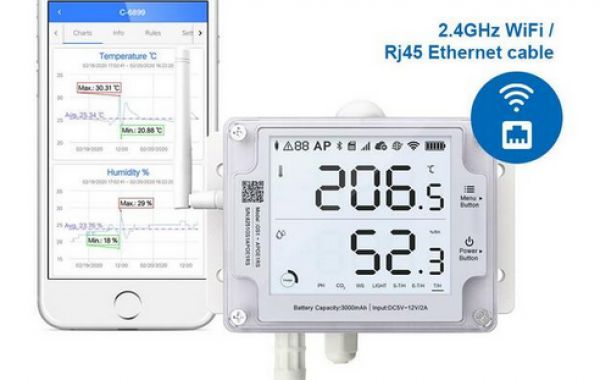The widespread use of the temperature sensor probe for the thermal regulation of different industrial processes has made this instrument an indispensable element for many industries.
However, it is easy to find doubts and confusion around the concept of a temperature sensor probe and its most common uses. Therefore, today we will detail everything that surrounds these probes. How it influences the temperature measurement and in which sectors temperature sensor probe is applied more frequently.
What is a temperature sensor probe?
A temperature sensor probe is a device that can transmit temperature from one place to another, converting it into an electrical signal that will reach another device of interest in question. Also known as a thermal probe or a temperature sensor, they all usually include a metal sheath and a connector cable that goes to the electronic device and the sensing part.
There are thermocouples, thermistors, and resistance thermometers or RTDs within its typologies. The thermocouple is the one that presents the most common use, and there are a large number of types of thermocouples that adjust to the minimum and maximum temperatures that are required in temperature detection.
For its part, the RTD probe bases its operation on resistance to temperature. Thermistors, meanwhile, are made up of semiconductor materials that react differently to variations in temperature.
The temperature thermistor also has variants, such as the NTC thermistor and the PTC thermistor. The NTC has less resistance at a lower temperature, while the PTC has more excellent resistance at a higher temperature.
How to choose the appropriate temperature sensor probe?
Once it is obvious what a temperature sensor probe is and its essential operation is understood, you will likely decide to apply one of them in your industrial activity. However, there are different types and variants when choosing the best among these temperature sensors.
What are the keys to acquiring the most suitable temperature probe? Without the possibility of error, how to determine which type is the most appropriate for your industrial tasks?
Here are the main characteristics to take into account when choosing a temperature sensor probe:
- Temperature
Temperature is measured depending on the temperature ranges and the required stability of the probes. The choice of the probes will vary. For this reason, it will be necessary to know with some clarity the minimum and maximum temperature that you want to establish when measuring it.
- Vibration resistance
The simplicity of construction of each temperature sensor probe can determine its resistance to vibrations during operation. This is another of the main aspects to consider when choosing a type of temperature probe.
- Accuracy required
When choosing a temperature indicator, the measurement accuracy is another factor that will determine its acquisition. Resistance thermometers offer greater precision in temperature measurement. In return, the price is higher than any thermocouple.
- External conditions
Attention should always be paid to all external agents that can influence the temperature measurement. Therefore, when choosing a temperature sensor probe, we must ask ourselves what external effects surround the environment to be measured and what materials are the most resistant to those conditions.
- Response time
When sudden temperature changes occur, these probes require a response time to return to stable values. If a faster response time is desired in the measurement, it will be crucial when deciding on a temperature detector. In this case, the thermistors have the fastest response time. On the contrary, thermistors have a greater fragility and require a current source for a correct measurement.








